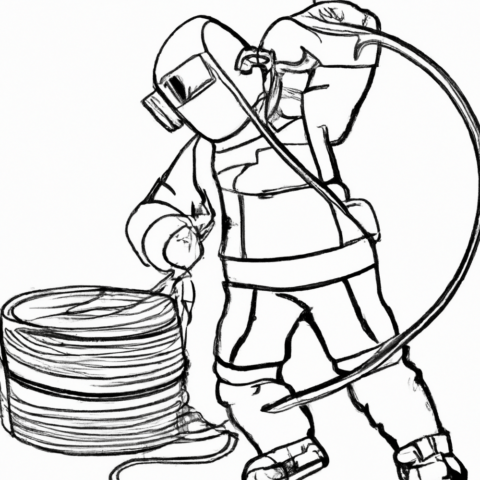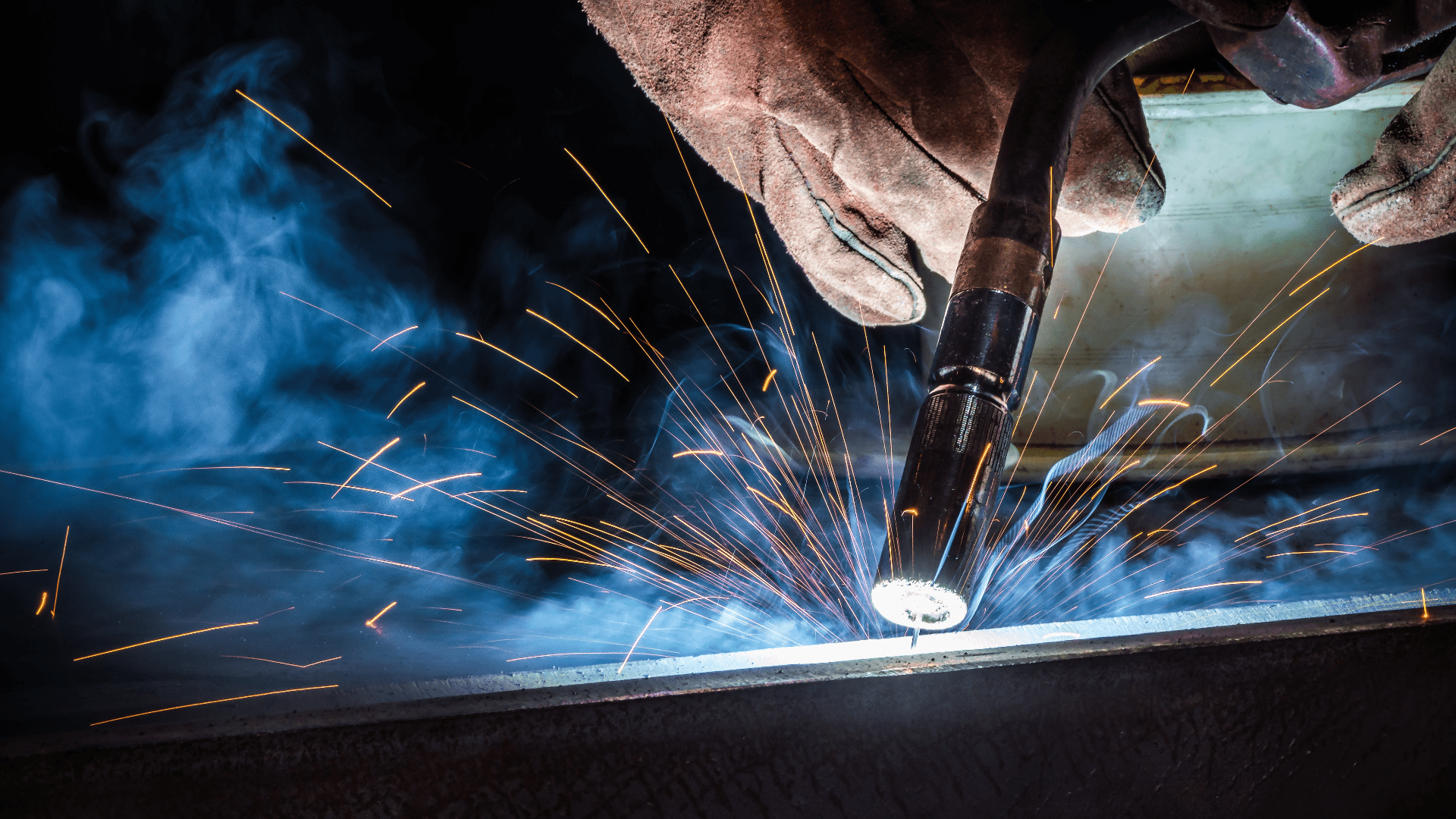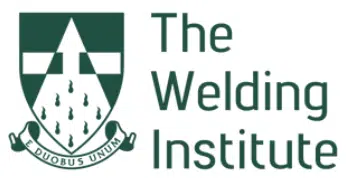MIG (Metal Inert Gas) welding, also known as Gas Metal Arc Welding (GMAW), is foundational in the welding sector. At its core lies the welding wire, which determines the weld’s characteristics and quality. The AWS classification system offers a structured way to categorize these wires, ensuring welders have a clear reference for their selection.
This guide delves deeper into the AWS classification system, shedding light on the intricacies of MIG welding wires and aiding in the selection process for specific projects.
In this guide:
Huge Savings on MIG Wire!
We offer a huge range of high-quality MIG wire suitable for a variety of applications and industries.
Decoding the AWS Classification System
The American Welding Society (AWS) classification system is a comprehensive framework designed to standardise the identification of welding wires. By understanding this system, welders can make informed decisions about the most suitable wire for their specific welding tasks.
Components of the AWS Classification System
- Prefix (e.g., ER):
- E stands for Electrode. This indicates that the wire can be used as an electrode during the welding process.
- R signifies Rod, denoting that the wire is in rod form.
- Tensile Strength (e.g., 70 in ER70S-6):
- This number represents the wire’s tensile strength in thousands of pounds per square inch (PSI). For instance, 70 translates to a tensile strength of 70,000 PSI or approximately 482.6 MPa.
- Wire Composition (e.g., S in ER70S-6):
- S indicates a Solid wire.
- T would denote a flux-cored wire, often followed by a number representing the specific type of flux core.
- C signifies a Composite or Composite Metal Cored wire, indicating that the wire is a metal-cored electrode for gas-shielded arc welding.
- Chemical Additives (e.g., 6 in ER70S-6):
- This number provides insights into the wire’s chemical composition and any additives. These additives can influence the wire’s welding characteristics, such as its polarity setting or shielding gas requirements.
Examples of AWS Classifications
- ER70S-6: A commonly used wire for carbon steel with a tensile strength of 70,000 PSI. The ‘6’ indicates added levels of deoxidizers (manganese and silicon).
- ER308L: Used for welding 304 and 304L stainless steels. The ‘L’ signifies a lower carbon content, which can help prevent intergranular corrosion.
- E71T-1: A flux-cored wire suitable for all-position welding with a tensile strength of 70,000 PSI. The ‘T’ indicates it’s a tubular wire, and the ‘1’ provides specifics about the flux composition.
- ER4043: An aluminium welding wire with good weldability and a smoother flow. The ‘4043’ denotes the specific alloy.
Some AWS classifications can be more intricate, especially when dealing with alloyed wires or those with specific use-cases:
- ER80S-D2: This wire is used for welding carbon-manganese steels subjected to direct current. The ’80’ indicates a tensile strength of 80,000 PSI, ‘S’ signifies it’s solid, and ‘D2’ denotes the presence of 0.5% molybdenum for increased strength at elevated temperatures.
By mastering the AWS classification system, welders can ensure they select the right wire for their projects, leading to better weld quality, efficiency, and overall project success.
Common AWS Codes for MIG Welding Wires
Common Stainless Steel AWS MIG Wire Codes:
| AWS Code | Metal Type | Common Applications | Purchase Link |
|---|---|---|---|
| E 308 L T1-1/-4 | Stainless Steel | Welding types 301, 302, 304, 305, and 308. | Buy Here |
| E 309 LT1-1/-4 | Stainless Steel | Welding dissimilar metals. | Buy Here |
| E 316 LT1-1/-4 | Stainless Steel | Welding types 316 and 316L stainless steels. | Buy Here |
| ER 2594 | Stainless Steel | Welding super duplex stainless steels. | Buy Here |
| ER 307Si | Stainless Steel | Used for overlay work, and for welding CMn steels and dissimilar joints. | Buy Here |
| ER 308LSi | Stainless Steel | Welding types 304, 304L, 308, and 308L stainless steels. | Buy Here |
| ER 309 LSi | Stainless Steel | Welding dissimilar metals and overlay work. | Buy Here |
| ER 309LSi | Stainless Steel | Welding dissimilar metals and overlay work. | Buy Here |
| ER 312 | Stainless Steel | Welding dissimilar metals. | Buy Here |
| ER 316LSi | Stainless Steel | Welding types 316 and 316L stainless steels. | Buy Here |
Common Carbon Steel AWS MIG Wire Codes:
| AWS Code | Metal Type | Common Applications | Purchase Link |
|---|---|---|---|
| E 70C-6M | Carbon Steel | General-purpose welding on dirty or rusty steel. | Buy Here |
| E 71T-1 | Carbon Steel | All-position flux-cored wire. | Buy Here |
| E 71T-1M | Carbon Steel | All-position flux-cored wire for welding on coated steels. | Buy Here |
| E 81T1-Ni 1M-J | Carbon Steel | Used for welding high strength steels. | Buy Here |
| ER 100S-G | Carbon Steel | Used for high strength, crack-sensitive steels. | Buy Here |
| ER 110S-G | Carbon Steel | High strength welding. | Buy Here |
| ER 120S-G | Carbon Steel | Used for welding high strength steels. | Buy Here |
| ER 70S-2 | Carbon Steel | Triple deoxidized wire for critical applications. | Buy Here |
| ER 70S-6 | Carbon Steel | General-purpose welding over mild or carbon steel. | Buy Here |
| ER 70S-A1 | Carbon Steel | Used for high-temperature service applications. | Buy Here |
| ER 80S-D2 | Carbon Steel | Used for welding carbon and certain low alloy steels. | Buy Here |
| ER 80S-G | Carbon Steel | General-purpose welding of mild steel. | Buy Here |
| ER 80S-Ni1 | Carbon Steel | Used for welding low-alloy steels with high tensile strength. | Buy Here |
| ER 80S-Ni2 | Carbon Steel | Used for welding low-alloy steels with high yield strength. | Buy Here |
| ER70S-6 | Carbon Steel | General-purpose welding over mild or carbon steel. | Buy Here |
| G 3Si1 | Carbon Steel | Used for general structural welding applications. | Buy Here |
Common Aluminium AWS MIG Wire Codes:
| AWS Code | Metal Type | Common Applications | Purchase Link |
|---|---|---|---|
| ER 1100 | Aluminium | General-purpose aluminium welding, especially for 1100 series aluminum. | Buy Here |
| ER 4043 | Aluminium | General-purpose aluminium welding, especially for 6XXX series aluminum. | Buy Here |
| ER 4047 | Aluminium | Used for welding aluminium alloys with high silicon content. | Buy Here |
| ER 5183 | Aluminium | Used for welding 6XXX series aluminium alloys. | Buy Here |
| ER 5356 | Aluminium | General-purpose aluminium welding, especially for 5XXX series aluminum. | Buy Here |
| ER 5556 | Aluminium | Used for welding 5XXX series aluminium alloys with high magnesium content. | Buy Here |
| S Al 5356 | Aluminium | General-purpose aluminuim welding, especially for 5XXX series aluminum. | Buy Here |
In the realm of MIG welding, the right wire can make all the difference. By understanding the AWS classification system, welders are equipped with the knowledge to select the most suitable wire for their specific needs, ensuring optimal weld quality and efficiency. As the welding industry continues to evolve, staying informed about these classifications will remain paramount. Whether you’re a seasoned professional or a budding welder, we hope this guide serves as a valuable resource, helping you navigate the complexities of MIG welding wires with confidence.





